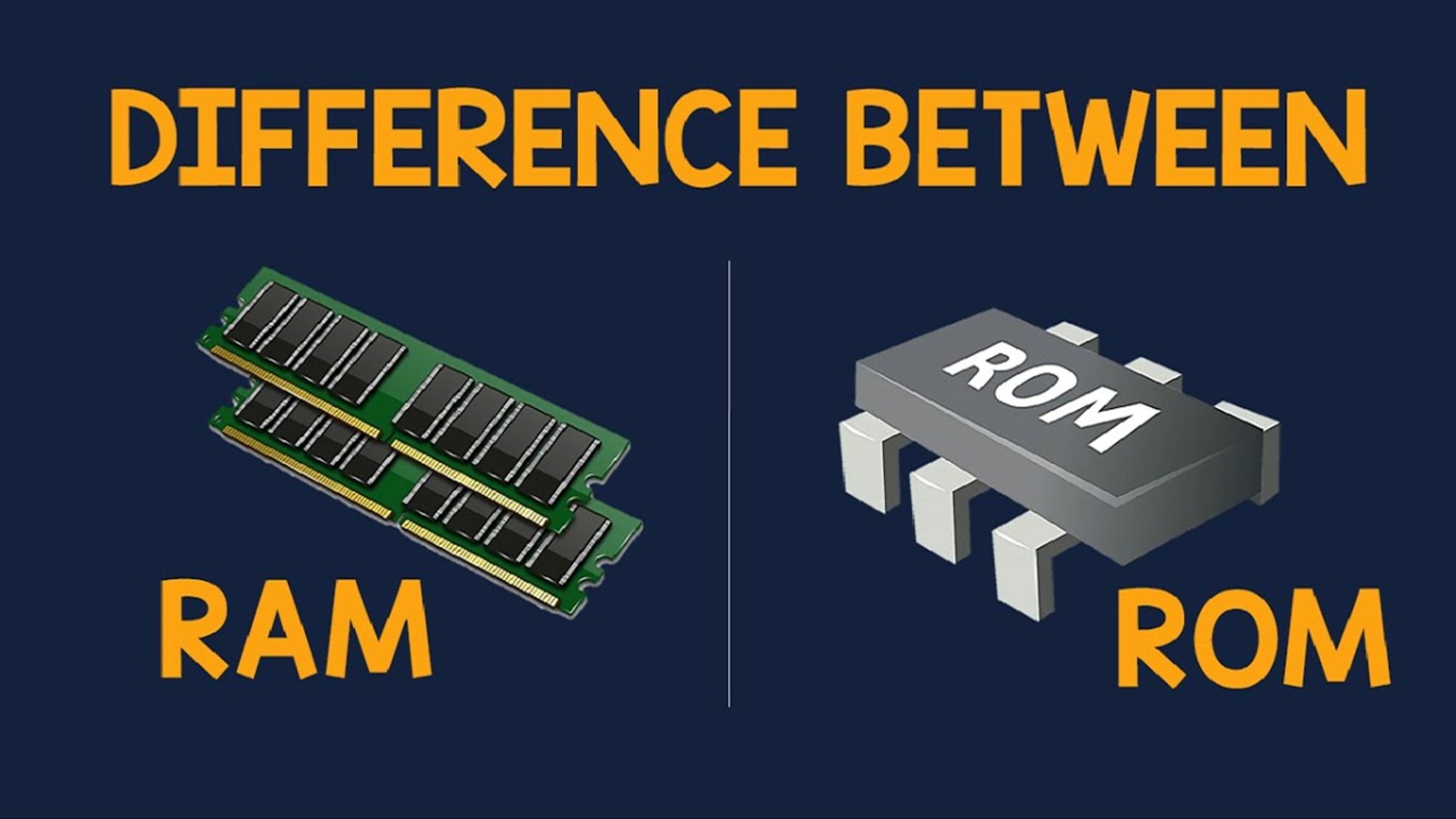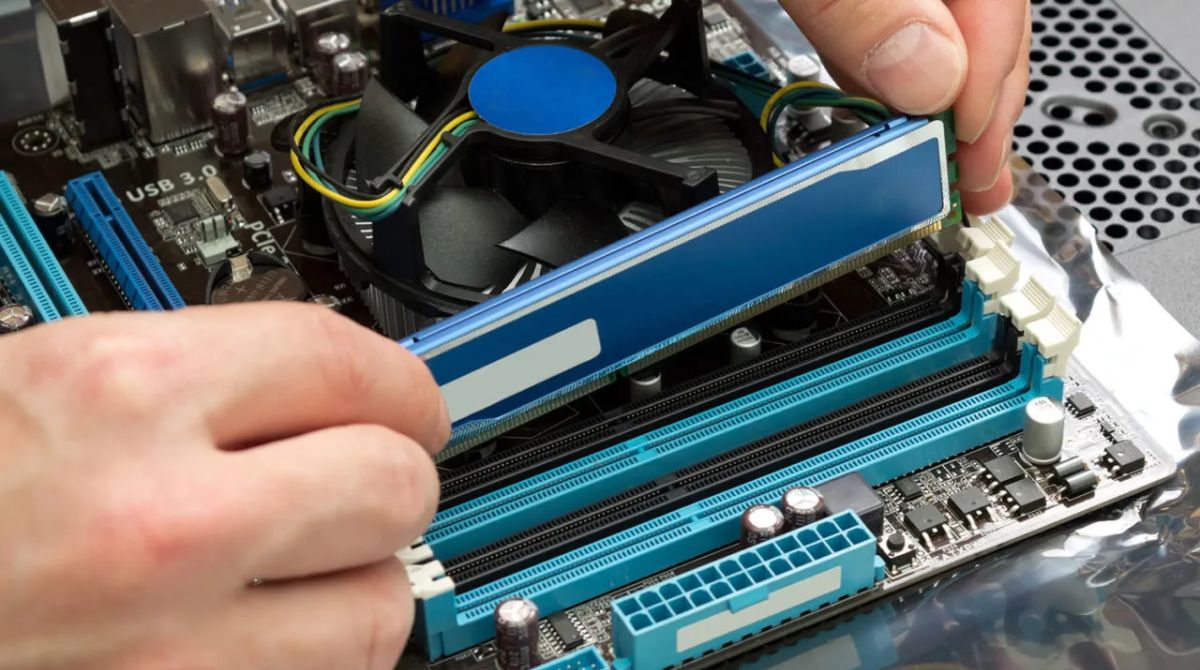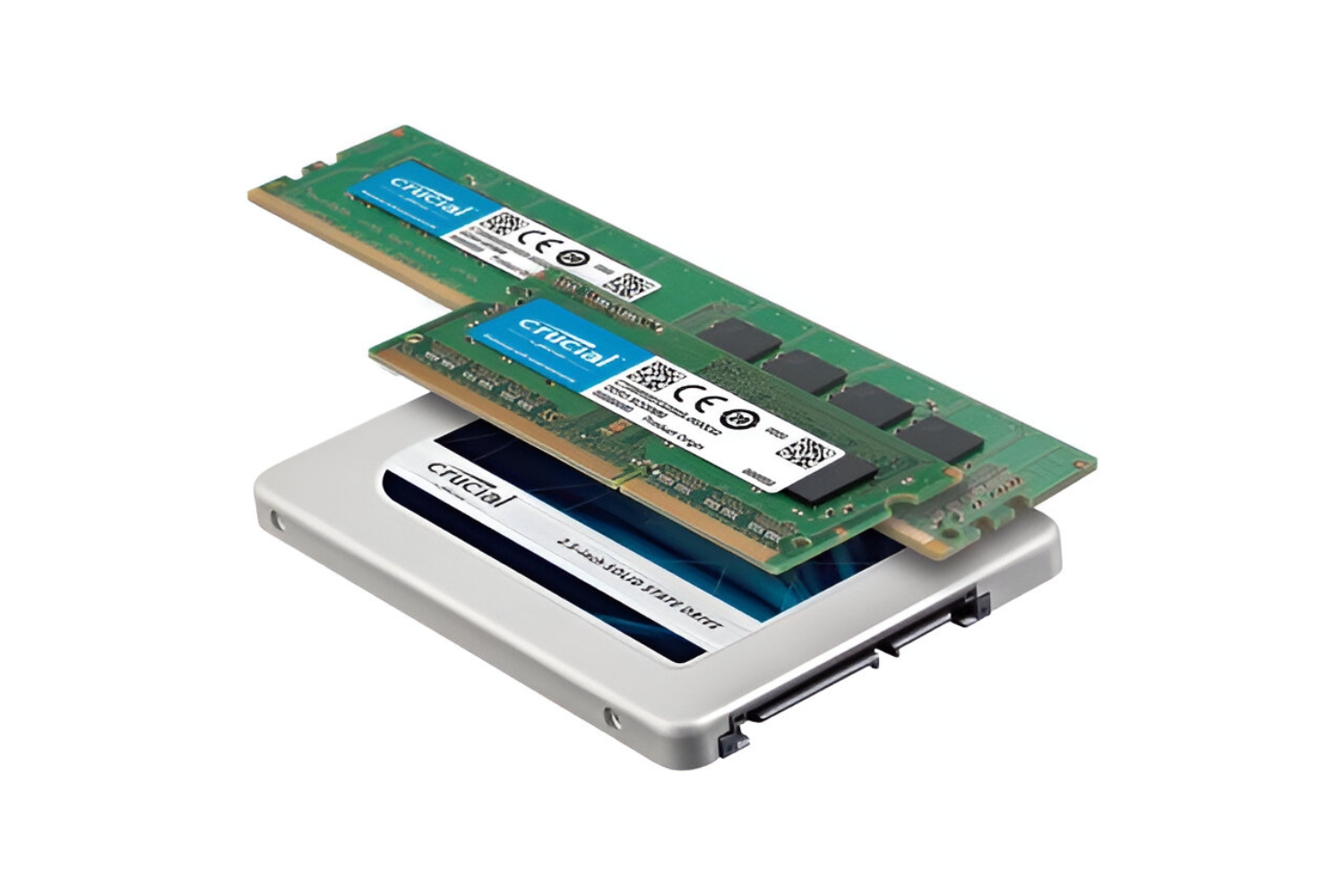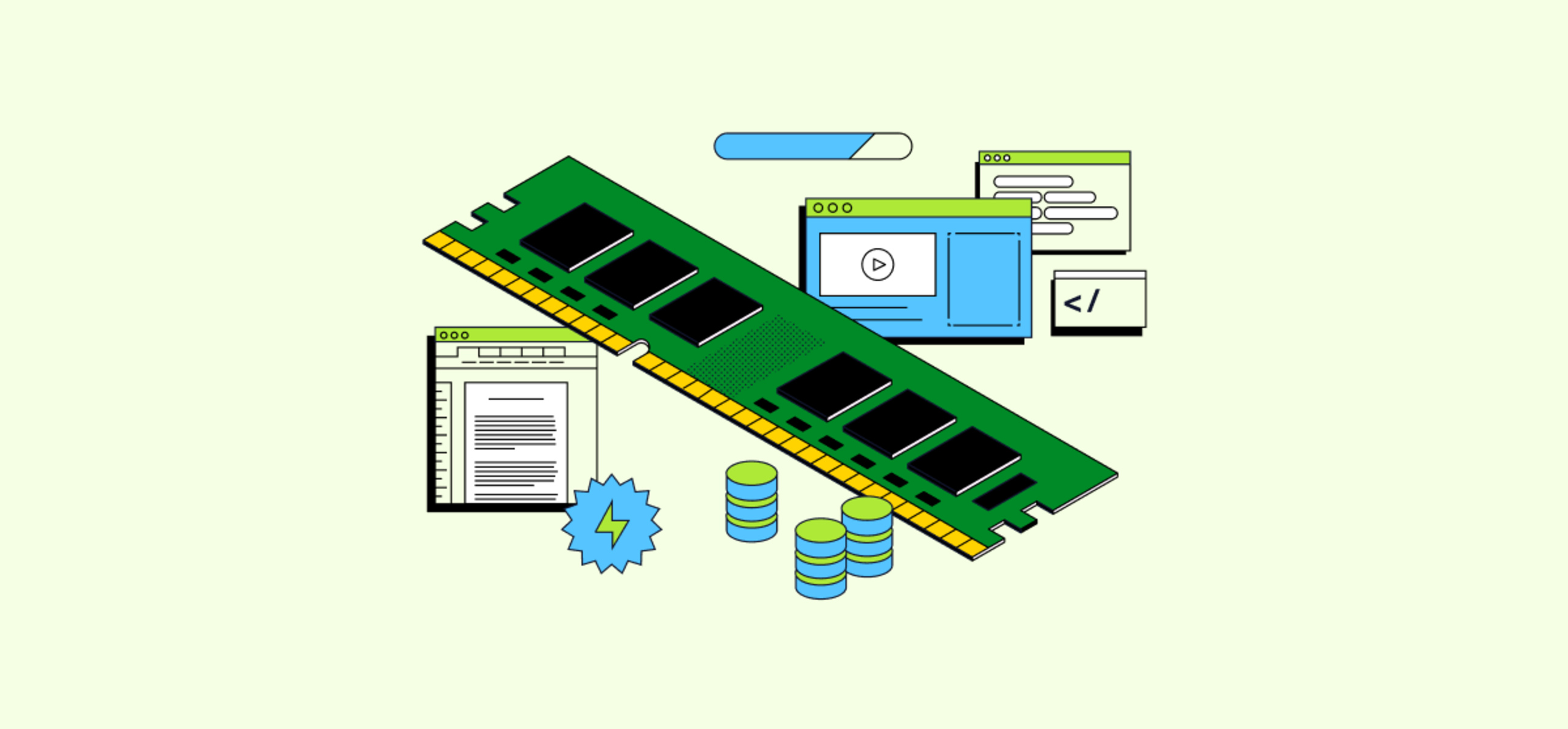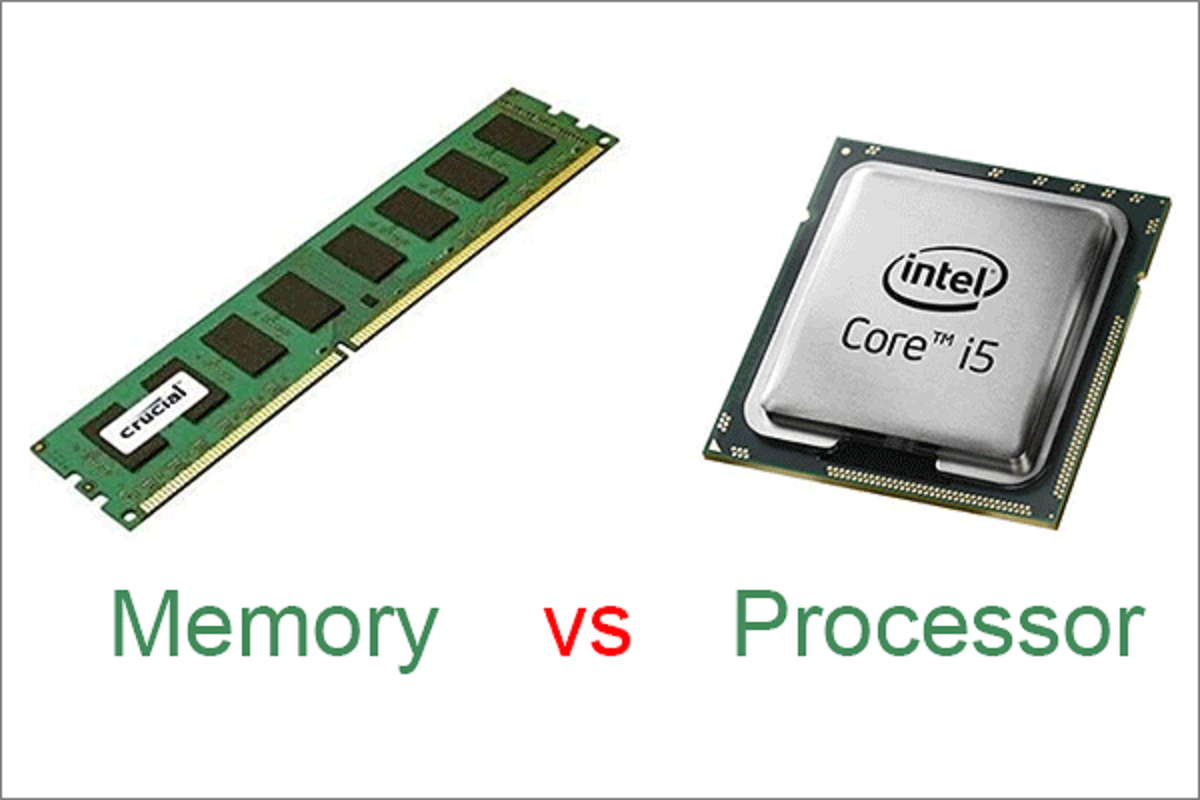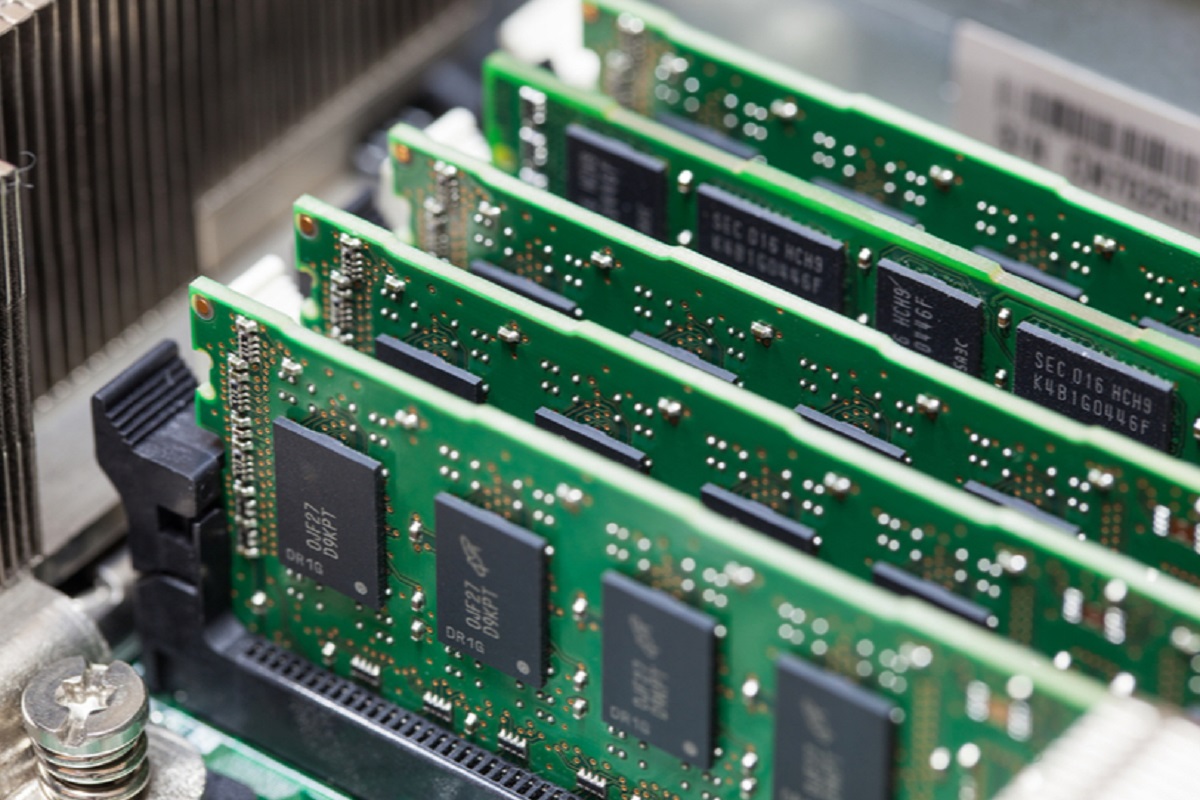Introduction
Welcome to the fascinating world of computer memory! Have you ever wondered what happens to your data when you save it or open multiple applications on your computer? The answer lies in RAM, or Random Access Memory. RAM is an essential component in modern-day computers, responsible for storing and accessing data quickly for immediate use.
Imagine RAM as a digital workspace where your computer can temporarily keep information while it’s being actively used. It serves as a bridge between your computer’s processing power and the storage devices where data is permanently stored. Without RAM, computers would be sluggish, struggling to perform even the simplest tasks.
RAM plays a vital role in the overall performance and efficiency of your computer. Understanding what is stored in RAM and how it functions can help you make informed decisions about upgrading your computer’s memory and optimizing its usage to enhance system performance.
In this article, we will explore the definition, function, and types of RAM. We will dive into the volatile nature of RAM, its distinction from Read Only Memory (ROM), and its importance in computer performance. Additionally, we will discuss how to manage RAM usage effectively to maximize the capabilities of your computer.
So, let’s embark on this journey into the world of RAM and discover what makes it crucial to the operation of our beloved devices.
Definition of RAM
Random Access Memory, commonly known as RAM, is a type of computer memory that allows for the temporary storage and quick retrieval of data. It is an integral part of a computer’s hardware, serving as a high-speed workspace where the computer can actively access and manipulate data.
Unlike the permanent storage provided by hard drives or solid-state drives (SSDs), RAM is volatile memory, meaning that its contents are lost when the power is turned off or the computer is restarted. This volatile nature of RAM enables it to provide fast and temporary storage for data that the computer needs to access frequently.
RAM is made up of a series of memory cells, each capable of storing a fixed amount of information. These cells are organized into memory modules, which are then inserted into slots on the computer’s motherboard. The capacity of RAM is typically measured in gigabytes (GB) or terabytes (TB) and can vary depending on the specific requirements of the computer system.
When a computer is turned on, the operating system and application programs are loaded into RAM from the storage devices. This allows the computer’s processor to quickly access and execute instructions and retrieve necessary data during the operation of various software applications.
One important aspect of RAM is its speed. RAM operates at a much higher speed than storage devices, such as hard drives or SSDs. This fast access speed enables the computer to retrieve data from RAM quickly, resulting in smoother multitasking, faster program execution, and overall improved system performance.
In summary, RAM is a type of volatile memory that provides temporary storage for data that the computer needs to access quickly. It allows for efficient data retrieval and manipulation, ultimately contributing to the overall speed and performance of a computer system.
Function of RAM
The function of RAM, or Random Access Memory, is crucial to the performance and efficiency of a computer system. It serves as a temporary storage space where data is held while the computer performs various tasks. RAM plays a vital role in enabling multitasking, quick data access, and efficient program execution. Let’s explore the key functions of RAM in more detail:
1. Running Applications: When you open an application on your computer, it gets loaded into RAM. This allows the processor to access the necessary data and instructions quickly, resulting in smooth and responsive program execution. RAM ensures that your computer can handle multiple applications simultaneously without significant slowdowns.
2. Multitasking: RAM enables you to switch between applications seamlessly. As you open multiple programs or browser tabs, RAM allows the computer to store the necessary data of each active application in its memory cells. This means you can quickly switch between tasks without experiencing significant delays in data retrieval or program loading times.
3. Loading Operating System: The operating system itself is loaded into RAM when you boot up your computer. This allows the processor to access the critical system files and services required for the computer to function properly. The more RAM you have, the faster your operating system will load, resulting in a quicker startup time.
4. Virtual Memory Management: When the amount of data in RAM exceeds its capacity, the computer uses a portion of the hard drive or SSD as virtual memory. This process, known as paging or swapping, allows the computer to temporarily transfer less-used data from RAM to the storage device. This mechanism helps alleviate memory constraints and enables the efficient use of available resources.
5. Cache Memory: RAM also plays a significant role in caching frequently accessed data. The processor utilizes cache memory, a small and extremely fast type of RAM, to store temporary copies of instructions and data that it expects to need again in the near future. This cache memory improves overall system performance by reducing the time it takes for the processor to retrieve frequently used information.
In summary, the function of RAM is essential for the smooth operation of a computer system. It facilitates multitasking, ensures quick data access, and enables efficient program execution. By providing temporary storage for running applications and allowing for seamless switching between tasks, RAM significantly contributes to the overall speed and responsiveness of your computer.
Storing and Accessing Data
RAM (Random Access Memory) plays a crucial role in storing and accessing data on a computer. When data is stored in RAM, it is readily available for the computer’s processor to access and manipulate. Let’s delve into how data is stored and accessed in RAM:
Storage of Data:
When you open a program or load a file, the relevant data is transferred from the storage device, such as a hard drive or SSD, into RAM. The data is divided into smaller units called memory cells, which are organized into memory modules. Each memory cell has a unique address, allowing the computer to locate and retrieve specific data quickly.
RAM stores both the data and the instructions required for the processor to execute tasks. This includes everything from application code and system files to temporary data generated during program execution.
Accessing Data:
Accessing data in RAM is incredibly fast compared to accessing data from storage devices. When the processor needs to retrieve data, it sends a request to the RAM controller, specifying the memory address where the data is stored. The RAM controller then locates and retrieves the requested data, sending it back to the processor for further processing.
RAM’s quick access speed is crucial for efficient multitasking and smooth program execution. It allows the processor to rapidly retrieve and manipulate data, resulting in faster application response times and improved overall system performance.
Furthermore, the random access nature of RAM enables data to be accessed non-sequentially. Unlike storage devices, which must read data in a specific order, RAM allows simultaneous and direct access to any memory cell. This random access capability is essential for multitasking, allowing the processor to quickly switch between different applications and retrieve the required data without delay.
It’s worth noting that the data stored in RAM is temporary and volatile. When the power is turned off or the computer is restarted, the contents of RAM are erased. That’s why it’s important to save your work and important files to permanent storage devices, such as hard drives, to prevent data loss.
In summary, RAM serves as a high-speed storage medium for data on a computer. It stores both data and instructions, allowing the processor to quickly access and manipulate the information. RAM’s random access nature and fast retrieval speed facilitate multitasking, smooth program execution, and overall improved system performance.
Volatile Nature of RAM
One of the key characteristics of RAM (Random Access Memory) is its volatile nature. Volatility refers to the fact that the data stored in RAM is temporary and is lost once the power is turned off or the computer is restarted. Let’s dive deeper into the volatile nature of RAM and its implications:
Temporary Storage:
RAM serves as a temporary storage space for data that the computer needs to access quickly. When you open a program or load a file, the relevant data is transferred from storage devices, such as hard drives or SSDs, into the RAM. The data remains in RAM as long as the computer is running, allowing rapid access and manipulation by the processor.
Loss of Data:
Once the power is switched off or the computer restarts, the data stored in RAM is lost. This is because RAM requires a constant flow of electricity to maintain the stored information. As soon as the electricity supply is interrupted, the stored data dissipates, and RAM returns to an empty state.
While the volatile nature of RAM might seem like a disadvantage, it actually provides several benefits. The temporary storage in RAM allows for quick data access, as the processor doesn’t have to rely on slower storage devices to retrieve information. Additionally, the volatile nature ensures that the RAM is always in a clean and ready state when the computer boots up.
Importance of Saving Data:
Due to the volatile nature of RAM, it is crucial to save your work and important files to permanent storage devices, such as hard drives or cloud storage. Saving data to permanent storage ensures that your files are not lost in the event of a power outage or system restart. It’s a good practice to save your work regularly to avoid potential data loss.
Restarting to Clear Memory:
In some cases, restarting the computer can help resolve certain issues related to RAM. When you restart your computer, the RAM is cleared, and the operating system and applications are reloaded into memory. This can help free up any occupied or fragmented memory, improve system performance, and resolve software-related issues.
Memory Modules and Power Backup:
In certain scenarios where data persistence is crucial, such as in servers or critical systems, additional measures can be taken to ensure the availability of data. These measures include the use of memory modules that have built-in power backup systems. These modules rely on batteries or other power sources to sustain the flow of electricity to the RAM, preventing data loss in case of a power outage.
In summary, RAM’s volatile nature allows for fast and temporary storage of data. It ensures quick access and manipulation by the processor but requires data to be saved to permanent storage to prevent loss upon power interruption. Understanding the volatile nature of RAM helps us appreciate its role in providing efficient and temporary data storage in computer systems.
Types of RAM
RAM (Random Access Memory) comes in various types, each with its own characteristics and capabilities. These types of RAM differ in terms of technology, speed, capacity, and compatibility. Let’s explore some of the common types of RAM:
1. DRAM (Dynamic RAM):
DRAM is the most prevalent type of RAM used in modern computer systems. It stores data as electric charges in capacitors within memory cells. However, due to its dynamic nature, DRAM requires constant refreshing to maintain its data, which can impact its speed.
2. SDRAM (Synchronous DRAM):
SDRAM is an improved version of DRAM that uses a synchronous interface, allowing for faster and more efficient data transfer. It operates in synchronization with the computer’s bus speed and can be found in various form factors, including DDR (Double Data Rate) variants.
3. DDR RAM (Double Data Rate RAM):
DDR RAM is a type of SDRAM that provides double the data transfer rate of traditional SDRAM. It achieves this by transferring data on both the rising and falling edges of the clock cycle. DDR RAM has evolved over time, with successive iterations such as DDR2, DDR3, and DDR4, improving performance and efficiency.
4. SRAM (Static RAM):
SRAM is a faster and more expensive type of RAM compared to DRAM. It uses flip-flop circuits to store data, making it static and not requiring refreshing like DRAM. SRAM provides faster access times and is often used in cache memory due to its high performance.
5. VRAM (Video RAM):
VRAM is a specialized type of RAM that is dedicated to storing graphical data for display devices, such as graphics cards. It allows for quick access to graphical data required by the graphics processing unit (GPU) for smooth video rendering and graphics-intensive tasks.
6. MRAM (Magnetoresistive RAM):
MRAM is a non-volatile type of RAM that uses magnetic storage elements. It combines the speed of SRAM with the ability to retain data even when power is removed, similar to storage devices. MRAM has potential applications in areas where fast and non-volatile memory is required.
These are just a few examples of the types of RAM available. Other types include EDO RAM (Extended Data Out RAM), RDRAM (Rambus DRAM), and LPDDR (Low Power DDR) used in mobile devices. The choice of RAM type depends on factors such as system requirements, compatibility, performance, and budget.
In summary, the different types of RAM offer varying speeds, capacities, and technological features. Whether it’s the cost-effective DRAM, the high-performance SRAM, or the specialized VRAM, understanding the characteristics and capabilities of these RAM types is essential for selecting the appropriate memory solution for your computer system.
Random Access Memory Vs. Read Only Memory
Random Access Memory (RAM) and Read Only Memory (ROM) are two types of computer memory that serve different purposes. While both are essential components of a computer system, they have distinct characteristics and functions. Let’s explore the differences between RAM and ROM:
Random Access Memory (RAM):
RAM is a volatile type of memory that provides temporary storage for data that is actively being used by the computer’s processor. It allows for quick read and write operations, enabling efficient multitasking and fast data access. RAM is dynamic, meaning its contents are lost once the power is turned off or the computer is restarted.
Key characteristics of RAM include:
- Temporary storage for data and instructions
- Fast read and write operations
- Volatile – data is lost when power is removed
- Allows for efficient multitasking and quick data access
- Varied types such as DRAM, SDRAM, DDR RAM, etc.
Read Only Memory (ROM):
ROM, on the other hand, is non-volatile memory that stores data and instructions that are permanently etched during manufacturing. It contains firmware or software instructions that are critical for the computer to boot up and initialize hardware components. Unlike RAM, ROM retains its data even when power is removed.
Key characteristics of ROM include:
- Permanent storage for firmware or software instructions
- Data cannot be written or modified
- Non-volatile – retains data even when power is removed
- Contains vital system information, such as BIOS or firmware
- Types include PROM, EPROM, EEPROM, and flash memory
ROM is used to store essential system instructions that are required for a computer to start up and perform basic operations. It includes the Basic Input/Output System (BIOS) or firmware that provides low-level hardware control. ROM is critical for the initial boot process and ensures system stability and reliability.
In summary, RAM and ROM serve different purposes in a computer system. RAM is volatile memory that provides temporary storage for data actively used by the processor, while ROM is non-volatile memory that stores permanent instructions critical for system initialization. Understanding the distinctions between RAM and ROM helps in comprehending their respective roles and importance in the overall functioning of a computer system.
Importance in Computer Performance
RAM (Random Access Memory) is a critical component that significantly impacts the performance and efficiency of a computer system. It plays a vital role in allowing the computer to execute tasks quickly and handle multiple operations simultaneously. Let’s explore the importance of RAM in computer performance:
1. Multitasking:
RAM enables smooth multitasking by providing temporary storage for data and instructions of running applications. With sufficient RAM, your computer can handle several programs simultaneously without experiencing significant slowdowns. This is essential for tasks such as running multiple applications, editing large files, or playing resource-intensive games.
2. Speed and Responsiveness:
RAM allows for faster data access compared to storage devices like hard drives or SSDs. When data is stored in RAM, the processor can quickly retrieve and manipulate it, leading to improved system responsiveness. This translates into faster program execution, quicker file opening times, and a smoother overall user experience.
3. Application Performance:
Insufficient RAM can result in slower application performance or even crashes. When there isn’t enough available RAM to hold the necessary data and instructions, the system relies on virtual memory or swapping, which involves transferring data between RAM and storage devices. This swapping process can cause significant performance degradation. Adequate RAM ensures that applications have enough space to operate efficiently, reducing lag and enhancing overall performance.
4. System Stability:
Insufficient RAM can lead to system instability, such as freezing or crashing. When the available RAM is consistently overburdened, it can cause bottlenecks, forcing the system to make compromises and prioritize resources. This can result in system errors, application crashes, or the infamous “blue screen of death” (BSOD). Sufficient RAM capacity ensures stability by providing ample space for data manipulation and reducing the strain on other system resources.
5. Future-Proofing:
As software requirements continue to evolve and become more demanding, having adequate RAM becomes increasingly important. Applications and operating systems tend to require more resources over time. Therefore, having additional RAM can future-proof your computer, ensuring it remains capable of handling future software upgrades and demanding tasks.
6. Virtualization and Resource-Intensive Tasks:
Virtualization, running multiple operating systems simultaneously, and resource-intensive tasks like video editing or 3D rendering, require substantial amounts of RAM. These operations demand large memory capacities to create virtual machines or process complex data. Sufficient RAM allows these tasks to be performed smoothly, avoiding sluggish performance and increasing productivity.
In summary, RAM plays a pivotal role in computer performance. It enables multitasking, improves application performance, enhances system stability, and contributes to the overall speed and responsiveness of the computer. Having adequate RAM capacity ensures a smoother user experience, reduces the risk of system instability, and allows your computer to meet the demands of modern software applications and tasks.
Managing RAM Usage
Managing RAM (Random Access Memory) usage is crucial for optimizing computer performance and ensuring efficient utilization of available resources. Proper management of RAM can help prevent system slowdowns, improve multitasking capabilities, and enhance overall responsiveness. Here are some effective strategies for managing RAM usage:
1. Close Unnecessary Programs:
Close any unnecessary programs or background processes that are running on your computer. These programs consume valuable RAM resources, even if they are not actively being used. By closing them, you can free up RAM for more important tasks and applications.
2. Monitor Resource Usage:
Use system monitoring tools to keep track of your computer’s resource usage, including RAM. This can help you identify which programs or processes are using the most memory. By monitoring resource usage, you can detect memory-intensive tasks and take appropriate action to optimize memory allocation.
3. Manage Startup Programs:
Review and manage the list of programs that automatically launch when your computer starts up. Some of these programs may not be necessary for immediate use and can be disabled or delayed from starting up, reducing the overall memory footprint during boot-up.
4. Adjust Virtual Memory Settings:
Virtual memory uses a portion of the hard drive or SSD as a supplement to physical RAM. By adjusting the virtual memory settings, you can optimize its size and allocation, ensuring it complements your RAM configuration. Consult your operating system’s documentation for guidelines on adjusting virtual memory settings.
5. Upgrade RAM:
If your computer consistently runs out of available RAM and experiences performance issues, consider upgrading your RAM capacity. Increasing the amount of RAM can provide more headroom for running multiple programs simultaneously and handling memory-intensive tasks more effectively. Refer to your computer’s specifications and consult with a reputable hardware provider for compatible RAM upgrade options.
6. Disable Visual Effects:
Visual effects in the operating system, such as animations and fancy graphics, can consume additional RAM. Disabling or reducing these visual effects can free up memory resources, allowing more RAM to be allocated to applications and tasks that require it.
7. Regularly Update Drivers and Software:
Outdated drivers and software can sometimes cause memory leaks or inefficiencies, resulting in unnecessary RAM usage. Ensure that your system’s drivers, as well as the software applications you use, are regularly updated to the latest versions. This can help resolve memory-related issues and optimize RAM utilization.
By implementing these strategies, you can effectively manage your computer’s RAM usage, ensure efficient resource allocation, and improve overall system performance. Remember to monitor system performance regularly and make adjustments as needed to maintain optimal RAM usage and a smooth computing experience.
Conclusion
RAM (Random Access Memory) is an integral component of any computer system, playing a crucial role in its performance and efficiency. It provides temporary storage for data and instructions that the processor needs to access quickly. RAM enables multitasking, improves application performance, and enhances system responsiveness.
We explored the definition of RAM and its function as a temporary storage space for actively used data. RAM’s volatile nature allows for fast data access but requires data to be saved to permanent storage to prevent loss. We also discussed the different types of RAM, including DRAM, SDRAM, DDR RAM, SRAM, VRAM, and MRAM, each with unique characteristics and use cases.
Furthermore, we compared RAM to ROM (Read Only Memory) and highlighted their distinct differences. While RAM provides temporary storage, ROM holds permanent instructions critical for system initialization, and both are essential for a computer’s operation.
The importance of RAM in computer performance cannot be overstated. Adequate RAM capacity enables smooth multitasking, improves application performance, enhances system stability, and future-proofs your computer. Insufficient RAM can lead to sluggish performance, system instability, and poor responsiveness.
Additionally, managing RAM usage is crucial for optimizing computer performance. Strategies such as closing unnecessary programs, monitoring resource usage, managing startup programs, adjusting virtual memory settings, upgrading RAM, disabling visual effects, and regularly updating drivers and software can help maximize the benefits of RAM and ensure efficient utilization of available resources.
In conclusion, understanding the role and importance of RAM in computer systems empowers users to make informed decisions about their memory requirements and the steps necessary to optimize system performance. By managing RAM effectively, you can unlock the full potential of your computer, enabling faster multitasking, smoother application performance, and an overall improved computing experience.









